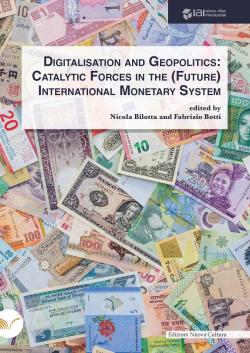Digitalisation and Geopolitics: Catalytic Forces in the (Future) International Monetary System
The recent “weaponisation” of finance against Russia might accelerate actions and ambitions to rethink financial globalisation to reduce the global dependence on Western-led currencies and payment infrastructure. Transformations in the international monetary system have historically been slow to materialise, though. Inertia and frictions are key forces that tend to consolidate the unipolarity of the system but, in the context of growing politicisation of money, the process of financial digitalisation can be a crucial force of change in pushing for diversification. Even though no other contender can challenge the existing US-dominated dollar system in the short-to-medium term, it is key to strategically reflect upon the long-term implications of a possible erosion of the Western leadership in the global monetary system. This volume focuses on the key question of whether recent geopolitical tensions and economic dislocations could be a catalyst for transformation in the current international monetary system.
-
Details
Rome, Nuova Cultura, March 2023, 166 p. : ill. -
Issue
10 -
ISBN/ISSN/DOI:
978-88-3365-572-7
Contributors, p. 7-10
List of abbreviations, p. 11-13
Introduction, by Nicola Bilotta and Fabrizio Botti, p. 15-17
1. The Future of the International Monetary System: Geopolitics and Technology, by Luca Fantacci and Lucio Gobbi, p. 19-47
1. Today: The current state of the international monetary system
1.1 Official use – Store of value
1.2 Official use – Means of payment
1.3 Official use – Unit of account
1.4 Private use – Store of value
1.5 Private use – Means of payment
1.6 Private use – Unit of account
2. Yesterday: How the dollar became the world’s currency
2.1 The Bretton Woods regime of capital controls
2.2 Fiat money and the oil shocks
2.3 Financial liberalisation
3. Tomorrow: Scenarios for the international monetary system
3.1 Technological challenge: The rise of cryptocurrencies
3.2 Geopolitical challenge: The impact of economic warfare
References
2. CBDCs and the US Dollar: Motivations and Emerging Issues, by Ananya Kumar, p. 49-64
1. What is a CBDC?
2. Motivations for developing CBDCs
3. Cybersecurity and privacy concerns
3.1 A cross-border use-case for CBDCs
4. The digital dollar and US leadership
References
3. Going Global: The Political Ambition and Economic Reality of the (Digital) Euro, by Nicola Bilotta and Erwin Voloder, p. 65-92
1. Digitalisation of payments: The geostrategic implications for the EU domestic market
2. The digital euro: The implications of its internationalisation
3. Digital-currency competition and norm entrepreneurialism
Conclusion
References
4. Different Futures for a Digitalised Global Financial System: How Can Europe Deal with Politicisation and Weaponisation?, by Maaike Okano-Heijmans and Brigitte Dekker, p. 93-111
1. Uncertainties and different futures
1.1 Concentration versus diversification: The rise of new players in digital finance
1.2 Harmonisation versus fragmentation: Regulatory pathways
2. Mapping the future of the digital financial system: Four scenarios
2.1 Harmonisation x concentration | Regulated Big Tech banking
2.2 Harmonisation x diversification | Interoperable financial ecosystems
2.3 Fragmentation x concentration | Big Tech banking goes local
2.4 Fragmentation x diversification | The decentralised crypto-economy
3. Towards politicisation and weaponisation?
Conclusion
References
5. China’s e-CNY as a Geopolitical Weapon: A New Era of Minilateralism in Asia’s Digital Economy, by Kai von Carnap, p. 113-140
1. Conditioning trade
1.1 Facilitating regional trade and investment: The renminbi’s future role
1.2 “Programmability” conditions and controls, spending and the use of e-CNY units
2. Three strategic themes for promoting foreign use
2.1 Three themes for promoting the e-CNY abroad
2.2 Domestic issues remain key drivers of the e-CNY’s development
3. Promoting the e-CNY through regional minilateralism
3.1 The main obstacle: Legal provisions for cross-border use of the e-CNY
3.2 Cross-border e-CNY pilots have been targeting different asymmetric minilateral arrangements
4. Outlook
4.1 Fragmentation of payment networks
References
6. Golden Parachute: Financial Sanctions and Russia’s Gold Reserves, by Daniel McDowell, p. 141-157
1. Sanctions and the growth of Russian gold reserves
2. Explaining Russia’s thirst for gold
3. Russian gold after the 2022 invasion of Ukraine
3.1 Gold sales in non-traditional markets
3.2 The crashing ruble, capital controls, and gold
Conclusions
References
Conclusion, by Nicola Bilotta, p. 159-164



